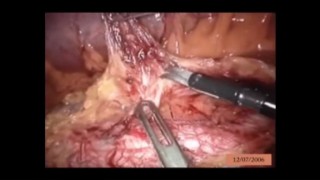Enhancing Hernia Care: Minimally Invasive Transabdominal Preperitoneal Repair
Add to
Share
1,223 views
Report
2 years ago
Description
Hernias are a common medical condition that affects millions of people worldwide. They occur when an organ or tissue pushes through a weak spot or tear in the surrounding muscle or connective tissue. Hernias can cause pain, discomfort, and even serious complications if left untreated. Fortunately, medical advancements have led to more effective and less invasive treatments for hernias, with one notable approach being the Transabdominal Preperitoneal Repair (TAPP). Understanding Hernias Before delving into the details of Transabdominal Preperitoneal Repair, it's essential to understand what hernias are and why they occur. Hernias can develop in various parts of the body, but they are most commonly found in the abdominal area. The primary types of hernias include: Inguinal Hernia: This is the most common type, occurring in the groin area when a portion of the intestine or bladder protrudes through the abdominal wall or into the inguinal canal. Femoral Hernia: Similar to an inguinal hernia but located lower in the groin, often more common in women. Umbilical Hernia: Happens when part of the intestine protrudes through the abdominal muscles near the navel. Incisional Hernia: Develops at the site of a previous surgical incision when the tissue or intestine pushes through the weakened area. Hiatal Hernia: Occurs when a portion of the stomach pushes upward through the diaphragm into the chest cavity. Hernias typically cause a noticeable bulge or lump in the affected area, which may be painful or uncomfortable, especially when lifting, coughing, or straining. The Evolution of Hernia Repair Traditional hernia repair techniques, such as open surgery, have been effective but often come with significant drawbacks. Open surgery involves making a relatively large incision at the site of the hernia, pushing the protruding tissue back into place, and then using sutures or mesh to reinforce the weakened muscle or tissue. While effective, open surgery can lead to longer recovery times, increased pain, and a higher risk of complications like infection and scarring. This has led to a growing interest in minimally invasive techniques like laparoscopic surgery for hernia repair. The Advent of Transabdominal Preperitoneal Repair (TAPP) Transabdominal Preperitoneal Repair, or TAPP, is a minimally invasive surgical approach that has gained popularity in recent years for treating certain types of hernias, particularly inguinal hernias. This technique offers several advantages over traditional open surgery and even other minimally invasive approaches like the totally extraperitoneal (TEP) repair. How TAPP Works Anesthesia: The procedure begins with the administration of anesthesia to ensure the patient is comfortable and pain-free throughout the surgery. Small Incisions: Instead of a large incision, TAPP involves making several small incisions in the abdominal wall. Carbon Dioxide Insufflation: Carbon dioxide gas is introduced into the abdominal cavity to create more space for the surgeon to work. Laparoscope Insertion: A laparoscope, a thin tube with a camera and light source, is inserted through one of the incisions. This allows the surgeon to visualize the hernia and surrounding tissues on a monitor. Dissection: With a clear view of the hernia, the surgeon carefully dissects and separates the peritoneum (the thin, transparent membrane lining the abdominal cavity) from the muscle wall. Hernia Repair: The protruding tissue is pushed back into place, and a synthetic mesh is inserted to strengthen the weakened area. Closure: After the repair is completed, the small incisions are closed with sutures or surgical staples. Advantages of TAPP Transabdominal Preperitoneal Repair offers several benefits compared to traditional open surgery and other minimally invasive techniques: Minimally Invasive: TAPP is a minimally invasive procedure, which means smaller incisions, less pain, and shorter recovery times. Less Postoperative Pain: Patients typically experience less postoperative pain and discomfort with TAPP compared to open surgery. Faster Recovery: The recovery period is often shorter, allowing patients to return to their normal activities sooner. Reduced Risk of Infection: The smaller incisions reduce the risk of surgical site infections. Lower Recurrence Rate: TAPP has been associated with lower hernia recurrence rates compared to some other repair methods. Who Can Benefit from TAPP? While TAPP is a valuable addition to hernia repair options, it's not suitable for all hernias or all patients. The choice of hernia repair technique depends on several factors, including the type and size of the hernia, the patient's overall health, and the surgeon's expertise. TAPP is commonly used for: Recurrent Inguinal Hernias: It is particularly effective in cases where an inguinal hernia has previously been repaired but has recurred. Bilateral Inguinal Hernias: When both sides of the groin are affected by inguinal hernias, TAPP can repair them simultaneously. Patients Seeking Minimally Invasive Surgery: Individuals who prefer a minimally invasive approach to reduce postoperative pain and recovery time may benefit from TAPP. Potential Risks and Considerations As with any surgical procedure, TAPP is not without potential risks and considerations. It's essential for patients to discuss these with their healthcare providers before undergoing the procedure. Some potential risks include: Bleeding: While uncommon, bleeding can occur during or after surgery. Infection: Infection at the surgical site is a possible complication, although it is less common with minimally invasive techniques. Nerve Injury: There is a small risk of injury to nerves in the abdominal wall, which can lead to temporary numbness or discomfort. Recurrence: While TAPP has a low recurrence rate, there is no guarantee that a hernia will not recur. Anesthesia Risks: Any surgery involving anesthesia carries some inherent risks, such as allergic reactions or adverse effects. Conclusion Transabdominal Preperitoneal Repair (TAPP) represents a significant advancement in hernia care, offering patients a minimally invasive alternative to traditional open surgery. This approach provides numerous benefits, including reduced postoperative pain, faster recovery times, and lower recurrence rates. However, TAPP may not be suitable for all hernias or all patients, and it's essential for individuals to consult with their healthcare providers to determine the most appropriate treatment option. As medical technology continues to advance, the field of hernia repair is likely to see further innovations and refinements in surgical techniques. Ultimately, the goal is to provide patients with the most effective and least invasive options for managing hernias, improving their quality of life, and minimizing the risk of complications.
Similar Videos






